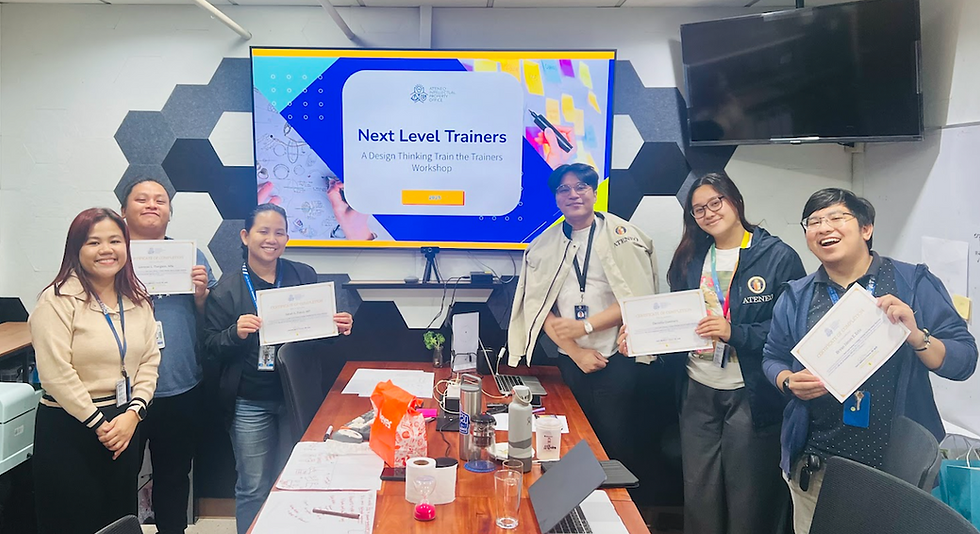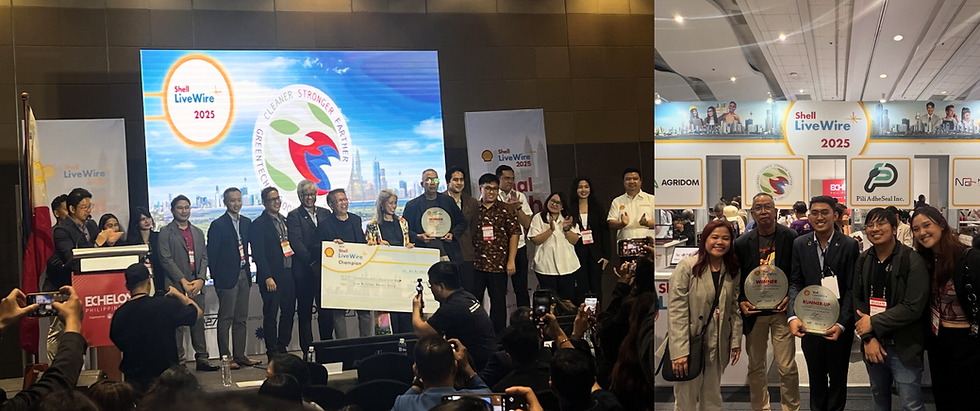Ateneo IPC's eHATID software receives Utility Model Award from IPOPHL
- Maria Lucia Tolentino
- Sep 21, 2022
- 3 min read
Updated: Jul 5, 2023
The Philippines is one of the developing nations investigating the use of technological advancements in a wide range of health-related activities. With regard to computerized health information systems (HISs), our nation recognizes the significance of a robust health information management system to support decision-making at all levels, from local health units up to the national level (Batangan et al., 2021).
An electronic medical record (EMR) system called eHATID LGU (eHealth TABLET for Informed Decision-making of LGUs) displays real-time or updated health records to improve health care services. It is a software application that manages users’ inputs, ensures patient access to medical data, and protects client information. Early disease detection, faster treatment, and improved patient-doctor communication are the features of this technology. Every local and rural area of the nation can benefit from the modernity that eHATID LGU can bring to its healthcare management systems.

Photo: The DOST-PCHRD-supported project eHATID LGU.
In 2013, the invention premiered as the eHealth TABLET, developed by the Ateneo de Manila University - Institute of Philippine Culture (ADMU-IPC) and the Ateneo Java Wireless Competency Center (AJWCC) to assist medical institutions in developing more effective strategies to address prevalent health concerns. Over time, eHealth TABLET developed into eHATID LGU, which now supports government organizations such as the Department of Health (DOH) and the Philippine Health Insurance Corporation (PhilHealth), in addition to healthcare facilities. They collaborated with the Department of Science and Technology Philippine Council for Health Research and Development (DOST-PCHRD) in order to promote the invention and develop initiatives using the health data.
Access to health care services is still a challenge for many Filipinos, which is why the eHATID LGU ensures quick assistance in a patient’s health records. The eHATID LGU offers a client application user interface, a medical or health-related information database, an electronic storage subsystem to store, process, and access medical information, and an interoperability platform. The invention also provides medical information to its users through the display of graphic representations, reports, and accomplished forms. The EMR system involves both web and mobile components wherein data is always stored in a cloud storage facility connected to the Philippines Health Information Exchange (PHIE) after being entered into the system. Its capacity to function even without an internet connection is also one of its key features.
The research team of eHATID, led by Dr. Dennis Batangan of the Ateneo de Manila University—Institute of Philippine Culture (ADMU-IPC) submitted a Utility Model (UM) application for the DOST-PCHRD-supported project eHATID LGU. It was submitted to the Intellectual Property Office of the Philippines (IPOPHL) on May 17, 2019. The certificate of registration for a UM was issued on May 7, 2021, granting a seven (7) year period of rights for the eHATID team to use, sell, or import the utility model. With this protection, eHATID LGU will continue its purpose to store, share, and retrieve medical health information for local government units. In addition to receiving a utility model award, the eHATID was given a term of ten (10) years for its registered brand, "eHATID LGU," and it still has an active 2020 patent application for "Electronic Record System."
Every Filipino now has access to an improved electronic medical health record system, thanks to the dependable innovation of eHATID. The Ateneo Intellectual Property Office (AIPO) helped protect eHATID LGU’s innovative solutions. It promoted growth in the health and technology sectors. This organization preserved their research’s existence and role.
Every innovative solution must have intellectual property protection, not just to provide the innovators' ownership, but also to motivate and encourage others to create their own invention. AIPO encourages inventors to be open-minded to new possibilities, take chances, and make a difference. It motivates us to come up with ideas for a better future.
WORKS CITED
Ateneo Intellectual Property Office. (2022). Ateneo Intellectual Property Office, Philippines. Ateneo Intellectual Property Office. https://www.aipo.ateneo.edu/
Batangan et al. (2021, May 7). Certification of Registration – A System for Storing, Sharing, and Retrieving Medical Information. Ateneo de Manila University.
Calderon, J. (2018, October 3). eHATID LGU User Guide And Manual. eHealth Philippines. https://ehealth.ph/ehatid-lgu-user-guide-and-manual/
eHATID LGU. (2022). eHATID LGU. eHATID LGU. http://ehatid.ehealth.ph/
eHealthPH. (2021, January 27). Creating Digital Spaces For Citizens’ Health Access: The eHATID LGU Project Technical Reports. eHealth Philippines. https://ehealth.ph/ehatid-monograph-2/
eHealthPH. (2022). eHATID LGU. eHealth Philippines. https://ehealth.ph/ehatid-lgu/
Electronic Record System. (n.d.). Invention Application For eHATID. Ateneo de Manila University.
GOV.PH. (2022). Utility Model. Intellectual Property Office Of The Philippines. https://www.ipophil.gov.ph/services/utility-model/
GOV.PH. (2022). Utility Model FAQ. Intellectual Property Office Of The Philippines. https://www.ipophil.gov.ph/help-and-support/utility-model/
IPOPHL grants utility model registration to DOST-PCHRD-supported project eHATID. DOST-PCHRD. (n.d.) Retrieved September 20, 2022, from https://www.pchrd.dost.gov.ph/news_and_updates/ipophl-grants-utility-model-registration-to-dost-pchrd-supported-project-ehatid/
SunStar. (2015, June 17). DOST, Ateneo introduce ‘eHATID’. SunStar Publishing Inc.. https://www.sunstar.com.ph/article/14888/dost-ateneo-introduce-ehatid
WIPO. (2022). Utility Models. World Intellectual Property Organization. https://www.wipo.int/patents/en/topics/utility_models.html



Step into the world of Block Breaker (ブロックブレイカー)and enjoy pure, unfiltered fun! Swipe your paddle to smash all the blocks and release some stress. As you advance, the challenges escalate, offering you a thrilling and exciting experience. Come join this journey of breaking free!
For those who enjoy a rush and want to test their driving skills, drive mad is a fun and challenging game.